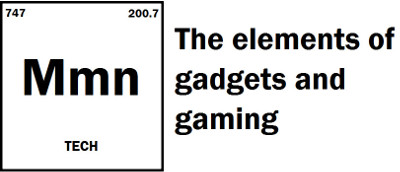
Xbox 360: Seventh Generation’s Middle Child
Updated Review: October 2008 to reflect new prices
More on this week’s looks at the ups and downs of console gaming. Today, we’ll look at the Xbox 360. I briefly owned one of these consoles back in February. Needless to say, I bought it on a whim and realized it was a mistake, so I returned it the next day. The 360 is truly the middle child of next gen consoles in terms of popularity . It was released in 2005, a full year before the Wii and Playstation 3 were released. It was the first seventh generation TV top console to be released and the third next generation gaming device on the market after the hand-held DS and PSP. The 360 is currently the top selling console in terms of total units sold since release and it usually takes second place for monthly sales after the Wii. In January 2008, the 360 saw a drop to fourth place in unit sales, being edged out by the Wii, PS2, and PS3 respectively. The 360 is an interesting console in that it looks and plays great, but it is a typical Microsoft product complete with lingering quality issues.
The first thing you’ll notice about the 360 is its bulk. It’s a tall unit that’s intended to sit vertically, rather than horizontally. It also comes with a massive power brick. It’s a little odd given that it’s competitors all feature internal power supplies. The brick creates more clutter behind your TV. Setup is simple enough, which it should be for a console. The main goal of these systems is no fuss gaming. Four models of the 360 have existed, of which three are currently for sale. The Core was a barebones system and has been discontinued. The Core had no on board storage, a wired controller, and a composite AV cable. Later models did feature an HDMI connector. The new Arcade system upgrades on the Core by including a 256mb memory card, wireless controller, and HDMI support. The Premium upgrades over the Core by adding a 60gb HDD, wireless controller, HDMI support, and HD video out cable. The Elite was the first to offer an HDMI audio/video port and only differs now from the premium by it’s 120gb HDD. I made the mistake of buying the Core. While it’s cheaper, you quickly realize how limited it is. The Premium is definitely the better buy but at $299. The Core was $280 but its lack of on-board storage is a major problem since games cannot be saved, which cripples the console. The Arcade is $199 while the Elite is $399. If you need more storage for the Core or Arcade, the 360 Hard Drive is overpriced at $120 for only 20gb of space. A 120gb hard drive costs a whopping $210. It’s simply just a 2.5” laptop drive that clips onto the top of the console. These drives can be purchased for well under $100. Unfortunately, the 360 cannot be upgraded with off the shelf drives. It is possible to hack open a proprietary drive and put your own in there but it can only format it to a 20gb, 60gb, or 120gb partition, leaving the rest unusable. Also lacking is standard memory card support, which the PS3 and Wii both have. The 360 uses proprietary memory cards with limited storage space. The cards are quite expensive at $50 and only store up to 512mb. Proprietary memory cards are obsolete at this point. Standard memory cards are cheaper if you aren’t intending to use the console as a multimedia player. They also make it easier to share or backup game saves and MP3s. The 360 does support external USB hard drives but games bought off the Xbox Live Marketplace cannot be stored on them due to copy-protection.
For control, all models except the discontinued Core have a wireless controller. The 360 however does not support Bluetooth like the PS3 does. The 360 does feature controllers with removable battery packs. Additional batteries cost $15. Microsoft claims 25hrs of play per charge.
For graphics, the 360 is excellent. It’s able to output in both standard and HD resolutions provided you have the HD cable. Even on standard NTSC 480i resolution, it still looks good with no lag. However, the system is optimized for HD gameplay at 720p or higher. The 360 is powered by a triple core PowerPC processor and an ATI graphics chipset loosely based on the Radeon X1800 series. The console itself seems solidly made. It does have some hardware problems though. The #1 problem is heat. The 360 does have cooling fans but because its so tightly packed, it heats up very quickly. It can feel almost like a hair dryer. This is the primary cause of the dreaded three rings of death. This is due to the the heatsinks and fans used in the console being too small. Some company was offering a cooling fan add-on that clips to the back but this can overload the system’s power supply and do even more damage. If you’re really gung ho, there are water cooling kits made by Koolance out there for the 360 but using these voids your warranty. Microsoft offers a three year warranty now due to these problems. My suggestion would be to use the console in an cool, air conditioned room, such as a basement.
Another problem is the DVD drive. It’s very loud. Louder than most PC and laptop drives. This is nothing more than an irritant but it still shouldn’t be for something that advertises itself as an multimedia system. Some European 360 users have also noted that certain drive makes used in the 360 can scratch the discs. I also would have preferred a slot loading drive as opposed to the tray design, especially since the console is meant to sit upright. It’s not a big deal but it’s going the extra mile, considering both the Wii and PS3 are slot loading. The tray design does allow for use of smaller 8cm discs or ones of irregular shape (business card CDs), but these are uncommon.
As for its other functions, the Core system I tested was very limited due to lack of storage. I tried DVD video and audio CD playback though. I must say that the 360 is so-so when it comes to media playback. Limited internal storage (for the Premium) and lack of Wifi hurt it as a media server. DVD playback is pretty basic, though the 360 does supposedly upscale DVDs to HD resolutions. The 360 supports the more common media formats such as Windows Media, MP3, and AVC. The 360 also now supports the popular DivX video format. However, the final nail in the coffin for media capability comes with its HD playback ability. While it’s primary competitor is HD capable out of the box, the 360 required an external addon drive for playing HD-DVD movies. Now that HD-DVD has lost the format war, Microsoft has discontinued the addon and is selling the remaining stock at bargain basement prices, $49 the last I heard. With HD-DVD’s loss, the Xbox 360 can no longer playback commercial HD movies. You can still play downloaded or home-made HD movies but the 20gb HDD limits how much you can store. Additionally, an optical or coaxial audio port would have been nice for those who don’t have HDMI capable surround sound receivers. Like the DVD drive, also not a big deal but it would have been going the extra mile. Netflix downloads are now available to US based 360 owners.
For games, the 360 has a wide array of them from decent to lackluster. Gears of War is hugely popular, as well as the Halo series and Mass Effect. The 360 is more adult oriented but like much of the non-Nintendo systems, it focuses mostly on first person shooters and car racing games. The 360 features a wide array of exclusive titles though. The 360 is also backwards compatible with a wide number of original Xbox games.
Most games offer full 720p support. Some offer 1080i. Support for true 1080p resolution is rare. I did not get a chance to test online capabilities since the system needs on-board storage before you can even try to set them up. Xbox Live is the 360’s service for online gaming. It is a pay service, unlike it’s competitors online services. The rates are fairly cheap though. A 12-month Gold plan is $59.99 CAD per year, which is by far the best value. The service is $7.99 on a per month basis, so a yearly subscription will save you about $36. A Gold subscription is required for online play. The Silver Xbox Live subscription is free and basically only allows you to use the XBL Marketplace. Games are purchased on the Marketplace by a points system similar to the Wii’s. To get you online, the 360 uses a 100BASE-TX 100mb/s ethernet connector. None of the models have Wifi built in, which both the Wii and PS3 do. A USB 802.11g Wifi adapter is available but overpriced at $100. I personally consider Wifi a must these days for these types of systems. While wired gives you a more solid connection, wireless is much easier to setup and doesn’t add to the cable spaghetti.
The lack of Bluray is starting to hurt the 360 in terms of gaming. Some titles are getting too big for 8.5gb DVD media. The HD media can hold 25-50gb, at least double what a DVD-DL can store. Metal Gear Sold 4 for example would require at least four discs. With the disc media reaching its upper limit, 360 games will likely not expand much more than their current state. Microsoft has repeatedly dismissed rumours that there will be a BD addon drive for the 360.
Overall, the 360 is a pretty decent game system but a poor multimedia system. It’s hardware problems are definitely something Microsoft needs to address, and the sooner the better. The CPU has been reduced to 65 nanometer process, which should cool things down, while the GPU will be reduced to 65nm sometime in Q3 2008. This means less heat and power consumption. As for the different models, the Premium is the only one worth buying. The Elite with its bigger hard drive is just too expensive and the Arcade still lacks an internal storage. Many thought the Elite would at least include a built in HD-DVD drive, despite Microsoft repeatedly announcing it would not. HD-DVD could have potentially been saved had the drive been included. The Elite has fewer features than the comparatively priced PS3, even if it does have a bigger hard drive. The Arcade, which has replaced the Core now finally comes with some storage, but 256mb is still pretty small compared to other offerings. It’s still a decent offering if your just looking for a game console and aren’t concerned about multimedia or downloadable content. Lets see how the 360 rates.
Graphics: 9/10
Game Performance: 9/10
Multimedia Performance: 5/10
Game Variety: 9/10
Build Quality: 6/10
Value: 8/10
Overall: 8/10
Hits:
-Excellent game library
-Excellent graphics performance
-Online gaming experience second to none
-Acrade model now includes 256mb memory card for storage
-Three year warranty
Misses:
-Still lingering build quality issues
-Online service requires monthly fee
-Noisy
-Just average multimedia capabilities
-No longer supports commercial HD movies. HD-DVD dead.
-Lack of Bluray limits game size
-Lack of Wifi connectivity
